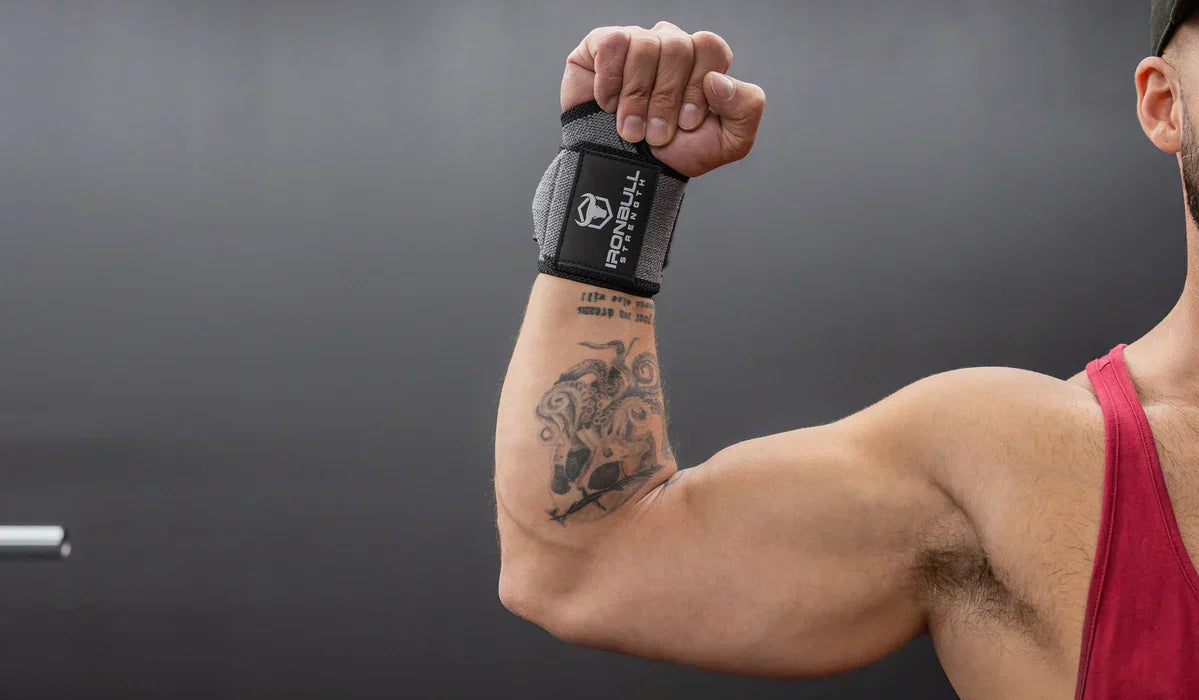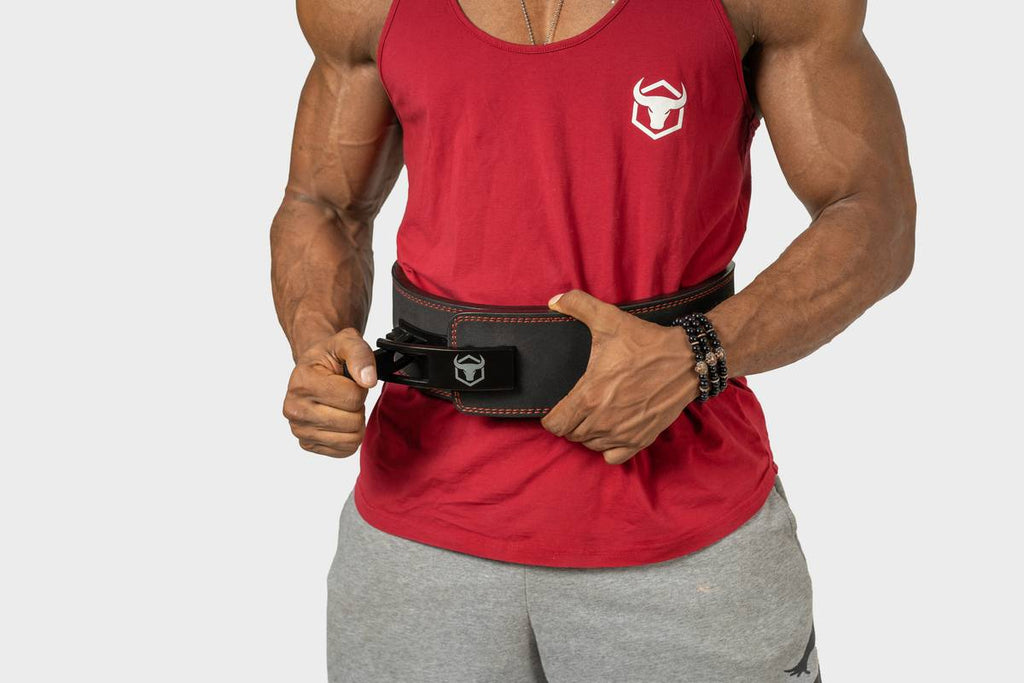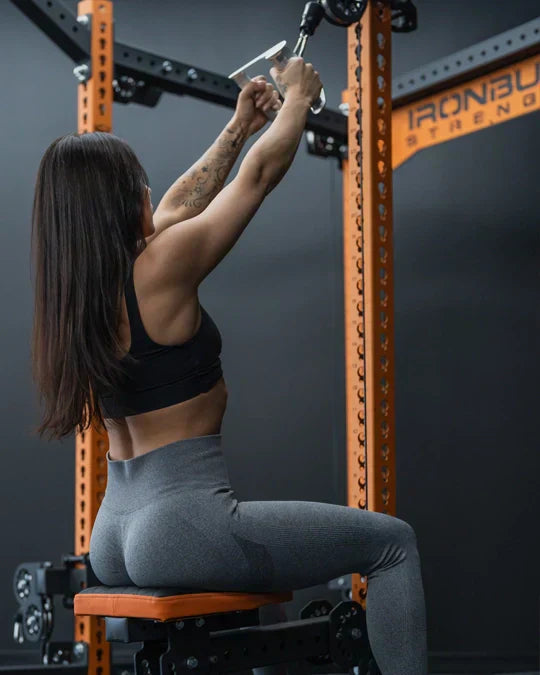What Are Wrist Wraps, Lifting Straps, and Weightlifting Gloves—and Do You Actually Need Them?

If you've ever walked into a gym and looked around at all the gear people are wearing—from thick lifting belts and knee sleeves to straps dangling from wrists—you might've wondered: Do I really need all this stuff? Among the most common tools you’ll spot in a serious strength training environment are wrist wraps, lifting straps, and weightlifting gloves. And like most support gear, each of these has a specific purpose, and using them properly can make a real difference in how you train.
But there’s also nuance. Using the right tool at the wrong time can lead to dependency. Using the wrong tool altogether can slow your progress or even cause issues. So let's break it down and explore what each of these tools actually does, when to use them, and how to know if they belong in your gym bag.
Wrist Wraps: What They Are and Why They Matter
Wrist wraps are thick, durable bands (usually made of cotton, polyester, or elastic blends) designed to provide external support to your wrist joint during heavy lifts. Most of them fasten with Velcro and wrap tightly around the wrist, often with a thumb loop for easy placement.
The primary purpose of wrist wraps is to stabilize your wrists when you're pressing or bearing weight overhead. Think bench press, overhead press, or even handstands for more advanced athletes. When the wrist joint is under significant pressure and loaded in extension, it can become a weak point. Wrist wraps help by reinforcing the joint, allowing you to keep your wrist in a more neutral and stacked position.
When You Might Need Wrist Wraps
If you’re lifting relatively light weights or still developing proper wrist and grip strength, wraps probably aren't necessary. However, if you're consistently pressing heavy or find that your wrists fatigue or bend under load before the rest of your body does, wraps can help. They're also useful for lifters with previous wrist injuries or those doing high-rep sets that require stable wrist positioning over time.
Wrist wraps are not a crutch, and they shouldn't be worn for every movement. The idea isn't to make your wrists lazy but to allow them to perform better when you’re pushing your limits.
Wrist Wrap FAQs
Can wrist wraps help with wrist pain? They might, but they’re not a cure. If your pain stems from instability or overuse, wraps can reduce stress. But don’t ignore chronic pain—see a medical professional.
Do I wear wrist wraps for pulling exercises? Generally, no. Pulling movements like rows or deadlifts don't stress the wrist joint in the same way pressing movements do.
Should I wear them the entire workout? Absolutely not. Wraps are for specific lifts, not your entire training session. You want to maintain your natural wrist strength where possible.
Lifting Straps: What They Are and Why They Matter
Lifting straps are simple yet powerful tools that wrap around your wrist and the barbell (or dumbbell) to secure your grip. They’re usually made from cotton, nylon, or leather and come in various forms: loop straps, lasso straps, and figure-eight straps. While they look similar to wrist wraps, they serve a very different purpose.
Lifting straps are grip aids. They’re meant to assist you when your grip is the limiting factor in your lift—not your actual strength.
Take heavy deadlifts, shrugs, or Romanian deadlifts. If your back and legs can handle more weight, but your hands give out first, straps help you keep going. They effectively shift the load from your grip to your wrists and forearms, letting you focus on the targeted muscle groups instead of struggling to hold onto the bar.
When Lifting Straps Are Worth It
If you're training at near-maximal intensities or doing high-rep pulling sets and find that grip fatigue is stopping you short, straps are probably a good idea. Many advanced lifters use them selectively during their heaviest lifts or when grip isn’t the focus of the session.
That said, don't use straps as a crutch if you're still developing grip strength. You don’t want to be the person who can deadlift 500 pounds but can’t hold a grocery bag.
Lifting Strap FAQs
Are lifting straps cheating? Not at all. They're a tool, just like a belt or chalk. Used appropriately, they help you lift more effectively and safely.
Should I train without straps too? Yes. Use them strategically. Build raw grip strength on lighter sets or accessories. Save the straps for when grip limits your progress.
Can I use straps on pull-ups? Technically yes, but it’s not recommended unless you’re doing weighted pull-ups and your grip is shot. Pull-ups should generally develop grip strength.
Weightlifting Gloves: What They Are and Why They Matter
Weightlifting gloves tend to be polarizing. Some love them. Others think they have no place in serious lifting. The truth is somewhere in between.
Gloves are primarily designed to protect your hands from calluses and blisters, and to provide a more comfortable grip on barbells, dumbbells, or machines. Most are padded and made of leather, neoprene, or synthetic material, and they often include wrist support as well.
Gloves can help reduce hand fatigue, improve grip in sweaty conditions, and make lifting less painful for some. But they can also reduce your tactile connection with the bar and add an unnecessary layer that changes how the weight feels.
Who Should Consider Weightlifting Gloves
If you’re new to lifting and find that your hands are sensitive or sore, gloves might help you stay consistent. Some lifters with skin conditions or sensory challenges find them useful. And for certain lifts like dumbbell bench or machine-based work, gloves can add comfort without much downside.
But if you’re focused on performance in barbell lifts, especially things like deadlifts, Olympic lifts, or powerlifting movements, gloves can be a disadvantage. They slightly increase the bar's diameter in your hand, which can reduce your grip efficiency. That’s why you rarely see competitive lifters wearing them.
Weightlifting Glove FAQs
Do gloves improve grip? They might feel like they do, but technically, they reduce the friction between your skin and the bar. Chalk or straps are better for performance grip.
Will gloves prevent calluses? To some extent, yes. But calluses are part of the game. You can manage them with regular care without needing gloves full-time.
Are gloves necessary for women or beginners? Not necessary, but they can be helpful if your hands are sore or you find gripping uncomfortable. Think of them as a stepping stone.
Bonus: Lifting Grips
Beyond wraps, straps, and gloves, there’s another category of lifting accessories worth knowing about—lifting grips. Specifically, lifting hooks and EZ Grips by Iron Bull Strength.
Lifting Hooks
Lifting hooks are rigid or semi-rigid devices that attach around your wrists and hook under the bar. They’re designed for those who want complete grip relief, often used in:
-
Rack pulls
-
Heavy shrugs
-
Deadlifts (for those recovering from injuries)
Hooks eliminate the need to grip entirely, making them ideal for those with wrist or hand issues.
Pro Tip: While useful, hooks can become a crutch if overused. They’re great in specific scenarios but shouldn’t replace all grip training.
EZ Grips V2
Our EZ Grips V2 are thick, contoured rubber grips that wrap around barbells, dumbbells, and cable handles to simulate thick-bar training. They serve two main purposes:
-
Increase muscle activation in your hands, forearms, and biceps.
-
Reduce joint strain by promoting a more natural grip alignment.
EZ Grips V2 are great for:
-
Pull-ups
-
Barbell and dumbbell curls
-
Rows and shrugs
-
Overhead pressing
They’re particularly popular among bodybuilders and arm-focused training routines, but even strength athletes use them for accessory work.
FAQ: Lifting Grips & Hooks Q: Are lifting hooks better than straps?
A: Not better—just different. Hooks offer total grip relief, while straps allow partial engagement. Use hooks when grip failure is unavoidable.
Q: What’s the benefit of EZ Grips V2 over regular handles?
A: They change the angle and engagement of your grip, forcing greater muscle recruitment, especially in your arms and forearms.
Q: Should I use EZ Grips every session?
A: No need. Rotate them in during accessory work or as a finisher. Think of them as a smart twist to shock your arms or break a plateau.
Final Thoughts
Each tool—wrist wraps, lifting straps, gloves, hooks, and grips—serves a purpose. None of them are mandatory, but all of them can help. The trick is knowing when and how to use each one.
Use wrist wraps for support during pressing. Use straps when grip holds you back. Use gloves if you want extra comfort. And experiment with hooks or EZ Grips when you want to change the game completely.
Train smart, and choose the gear that works for your body and your goals—not just what looks cool in the gym bag.
How to Choose What You Need (and When)
Wrist wraps, lifting straps, gloves, and lifting grips all serve unique roles in your training. The most important thing is to use them with intention. Don’t throw them all on and hope for better lifts. Think about what your actual limitations are.
If your wrists cave on heavy overhead presses, wraps might be a smart choice. If your grip fails on deadlifts even though your back feels strong, straps can extend your training. If sore or torn hands are stopping you from picking up weights consistently, gloves might make lifting more approachable. And if you’re pulling serious weight but your fingers are the limiting factor, lifting grips — like hooks or Iron Bull Strength’s EZ Grips V2 — can help you lock in without over-fatiguing your forearms.
But none of these tools should replace foundational strength. Always work to improve your raw ability first. Then let these accessories do what they do best: support you when you're pushing your limits.
So, do you need them? Maybe. But only if they help you train harder, safer, and with better technique. Because that, ultimately, is what smart lifting is all about.






